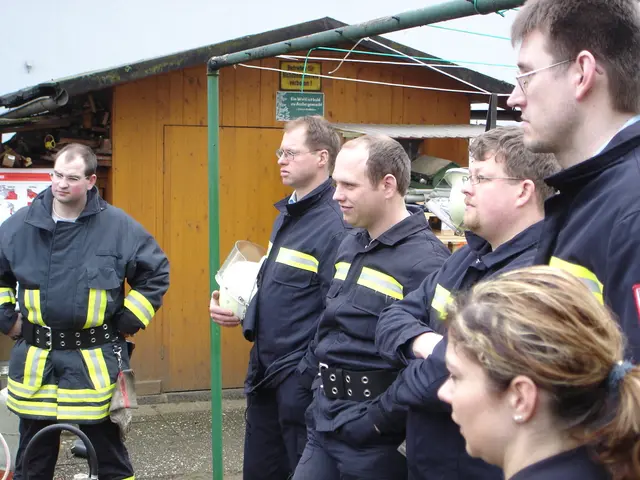- Penned by Mirjam Bittner
- Cult
- Tokyo
- Disaster
- Religious Community
Three decades since the Tokyo catastrophe: the demise of these cults marked by catastrophe - Three decades have passed since the Tokyo incident - these cults concluded catastrophically
Thirty years have passed since the chilling Tokyo subway sarin gas attack orchestrated by the sinister AUM Shinrikyo cult sent shockwaves across the globe. Here's a glimpse of its troubling aftermath:
Justice Served, Yet Unsatisfied
- The Fall of Top Brass: Shoko Asahara, the twisted mastermind of AUM Shinrikyo, along with a dozen senior associates, met their end in 2018, receiving capital punishment for their horrifying crimes, including the tragic 1995 Tokyo subway attack and the prior 1994 sarin gas attack in Matsumoto[1][2].
- Financial Ruin and Division: The original AUM Shinrikyo tumbled into bankruptcy in 1996, fragmenting into successor groups such as Aleph and other splinter factions. These malevolent sects have persisted in recruiting unsuspecting adherents[1][2].
The Enduring Echo of Aleph and Its Brethren
- Aleph's Persistence: With around a thousand disciples, Aleph stands tall as the most influential successor group. Japanese security services remain vigilant, scrutinizing their financial dealings, places of worship, and dwellings. However, fears linger regarding potential future perils, although another ghastly sarin gas incident is thought to be improbable[2].
- Residual Influence: The ideological grip of these groups lingers, as members continue to uphold Shoko Asahara as a revered figure. This suggests that while the immediate terror may have dwindled, the insidious ideology lives on[2].
Education and Awareness Keep the Memory Alive
- Remembrance and Schooling: Platforms have been established to honor victims and enlighten the public about the pitfalls of joining such cults. Japan's Public Security Intelligence Agency manages a digital archive detailing the cult's activities and warning citizens of their hidden dangers[1][2].
- Advocating for Victims' Families: Survivors and spouses of victims continue to champion awareness and lobby for legislation designed to safeguard potential cult victims. One such hero, Shizue Takahashi, who lost her husband in the attack, has become an eloquent voice for change, helping shape laws that enable victims' families to attend trials[2].
- The community policy in Japan has increased vigilance towards malevolent sects such as Aleph and other successor groups of the AUM Shinrikyo cult, as concerns regarding potential future perils persist.
- The employment policy within religious communities like Aleph has seen continued recruiting of unsuspecting adherents, despite the fall of top brass and the end of the original AUM Shinrikyo in 1996.
- Mirjam Bittner, the author of the article discussing three decades after Tokyo's deadly cult attack, has emphasized the importance of education and awareness to keep the memory of the victims alive and shield the public from the hidden dangers of joining such cults, which are reminiscent of the tragic events that occurred in Tokyo and other parts of Japan.







